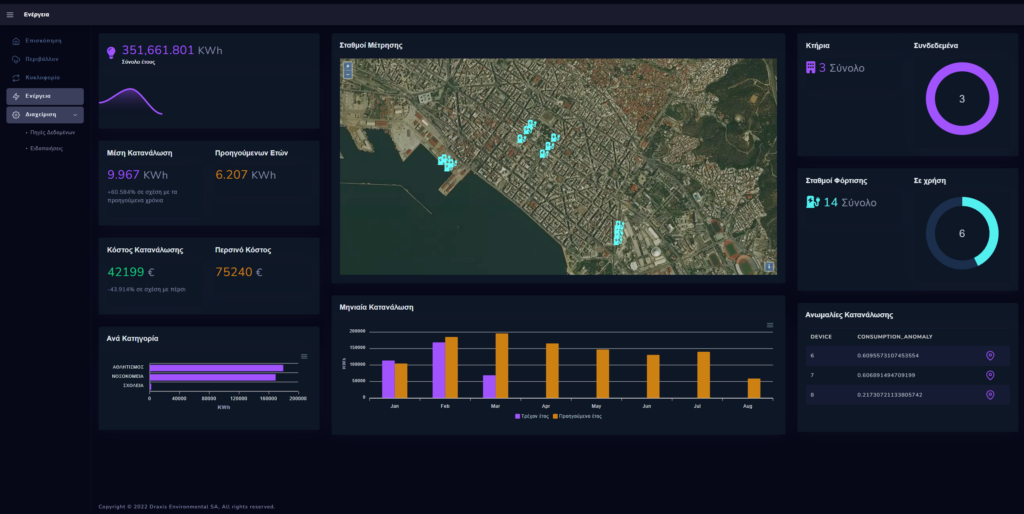Geospatial Intelligence (GeoInt)
GeoInt is an integrated solution for
data collecting, analysis, and decision-making that integrates geospatial
intelligence and machine learning techniques. It provides pattern recognition,
environmental risk prevention, resource management optimization, and monitoring
and adaptation planning for climate change.
The platform rises to the challenge of easily collecting, correlating and visualizing different forms of data from a variety of sources into a unified geospatial representation using cutting-edge technologies without the hassle of different communication protocols.

GeoInt is able to:
- integrate among edge devices, remote sensing images and geospatial datasets without the concern of different protocols and complexity.
- combine data with ready-made constantly updated datasets.
- harmonize and analyze heterogeneous data sources based on location information or any other dimension.
- integrate external models and algorithms into the platform, to augment and enrich the analysis.
- use intelligent analytics to support scientists and domain experts, with complex queries, build dashboards and location intelligence services.
Characteristics
Interconnectivity
Data Augmentation
Geospatial Analysis
Calculation Engine
Visualization
Advanced Notification Functionalities
Access Rights
Interoperability
GeoInt is offered as a service capable to support multiple Industries that use locational Data. It is currently being used in installations that support the monitoring of Climate Change by providing a comprehensive overview of key climate indicators, including temperature, carbon dioxide levels, sea level, and extreme weather events, allowing users to track changes over time. Researchers are able to access historical trends for each indicator, gaining valuable insights into the long-term effects of climate change.
Using modern visualization tools, GeoInt is being also offered as a Smart City Solution through which stakeholders can reveal information that is hidden among a variety of data to assist on a) reduction of the operating costs in areas such as waste management, building and street lighting, energy, water and public transport, b) urban planning, c) tackling air pollution and climate change, and d) mobility and parking.